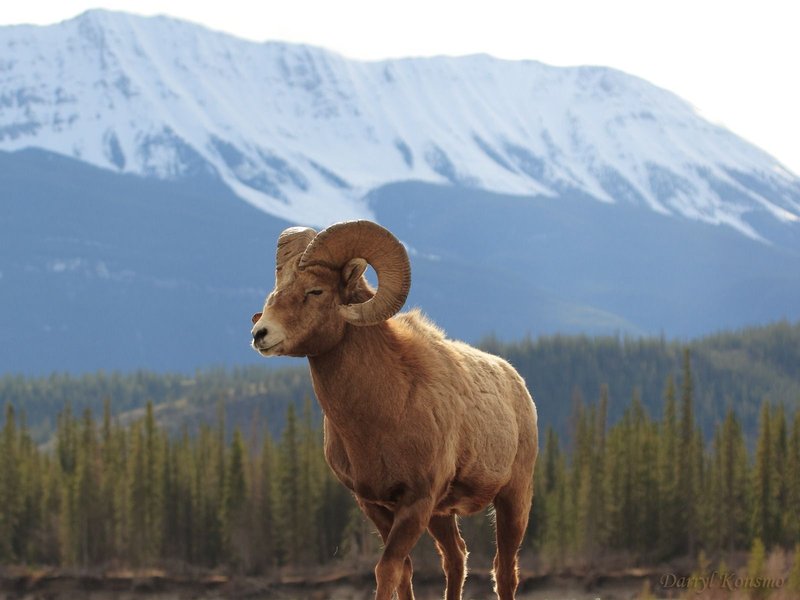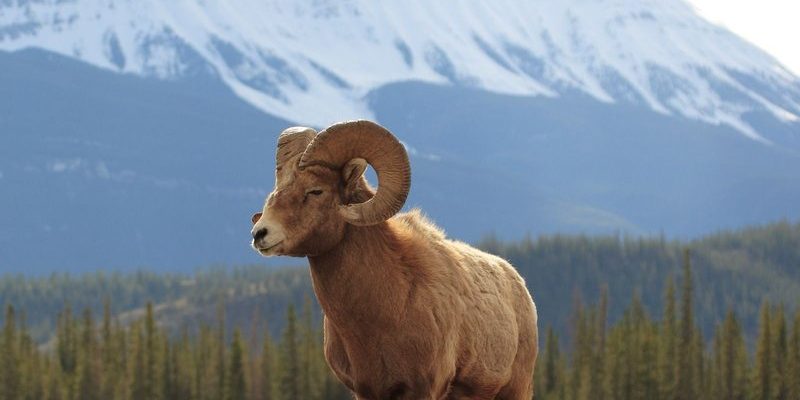
Bighorn sheep have some amazing adaptations that help them not just survive, but thrive in harsh environments. From their impressive horns to their social structures, every aspect of their life contributes to their ability to navigate the wild. So, how exactly do they do it? Let’s unpack the secrets to their resilience and see what we can learn from these tough mountain dwellers.
The Mighty Horns: Nature’s Tools for Survival
Bighorn sheep are known for their impressive, curved horns that can weigh up to 30 pounds. These aren’t just for show; their horns are vital tools for survival. When bighorn sheep fight for dominance or mating rights, they clash their horns together with incredible force, displaying strength and resilience. This behavior helps establish a social hierarchy within their groups, which is important for mating and maintaining order.
But here’s the thing: the horns also serve practical purposes. They can act as a barrier against predators, making it harder for them to attack. Plus, when food is scarce, these horns help them dig through snow to reach hidden vegetation. Imagine it like having a built-in shovel ready for any situation.
Adaptations to Harsh Weather
Bighorn sheep are true masters of adaptation. Living in rugged mountain ranges means they face extreme temperatures and unpredictable weather. In the winter, they have thick woolly coats that keep them warm, trapping heat against their bodies. You might think of it like wearing a thermal jacket, but theirs is naturally grown and incredibly effective.
When the snow starts to pile up, these sheep are unfazed. Their specialized hooves are wide and split, acting like natural snowshoes that prevent them from sinking into deep snow. This way, they can traverse steep slopes and find food where other animals struggle. It’s almost like they’re designed for their environment, don’t you think?
Foraging Skills: Finding Food in Tough Terrain
Finding food is a challenge in their rugged habitat, but bighorn sheep are expert foragers. They eat a diet mainly composed of grasses, shrubs, and other vegetation. Because they can graze at high altitudes, they often find food that might be out of reach for other herbivores.
Here’s the cool part: bighorn sheep have a highly developed sense of smell and sight, which helps them detect food from a distance. When you watch them navigate rocky outcrops, it’s almost like they’re playing a game of treasure hunt, sniffing out the best patches of grass hidden among the rocks. They can often be seen feeding at dawn or dusk when temperatures are cooler and predators are less active.
Social Structures: Strength in Numbers
Bighorn sheep are social animals that live in groups called bands. These bands are often made up of females and their young, while males typically form separate groups. This social structure provides safety in numbers, making it harder for predators to pick off individuals.
Here’s where it gets interesting: during mating season, males will rejoin the females, often sparring with each other to show dominance. The strongest male usually earns the right to mate. This setup not only strengthens the population but ensures that the healthiest genes are passed down. Think of it as nature’s way of promoting resilience and adaptability in the face of harsh environments.
Predators and Threats: Nature’s Challenges
Despite their tough exterior, bighorn sheep face threats from predators like mountain lions, coyotes, and even humans. Their keen eyesight and agility make them hard to catch, but they’re not invulnerable. Predation can significantly impact their populations, especially in harsh winters when food is limited.
To combat these threats, bighorn sheep use their expert climbing skills to escape into steep, rocky areas where predators can’t follow. Picture them as acrobats, gracefully leaping from one ledge to another. This ability to navigate treacherous terrain is a testament to their evolution and survival instincts.
Conservation Challenges: Protecting Their Habitat
With changing climates and urban development, bighorn sheep are facing new challenges that threaten their survival. Habitat loss and fragmentation due to human activities can lead to decreased food sources and increased competition for resources. Conservation efforts are critical to maintaining their populations.
Organizations and wildlife agencies are actively working to protect bighorn sheep by preserving their natural habitats and implementing laws against poaching. You might be wondering how you can help—supporting local conservation efforts, spreading awareness, or even just appreciating wildlife can make a big difference.
Bighorn sheep are remarkable creatures that embody resilience in the face of adversity. From their impressive horns to their social structures, every aspect of their life is a testament to survival in harsh environments. Their ability to adapt, find food, and navigate treacherous terrains can teach us valuable lessons about perseverance and community.
So, the next time you find yourself facing a challenge, think of the bighorn sheep and their incredible journey. They remind us that with the right adaptations and support, we too can thrive in even the toughest conditions. Whether climbing mountains or overcoming personal hurdles, resilience really is key.

